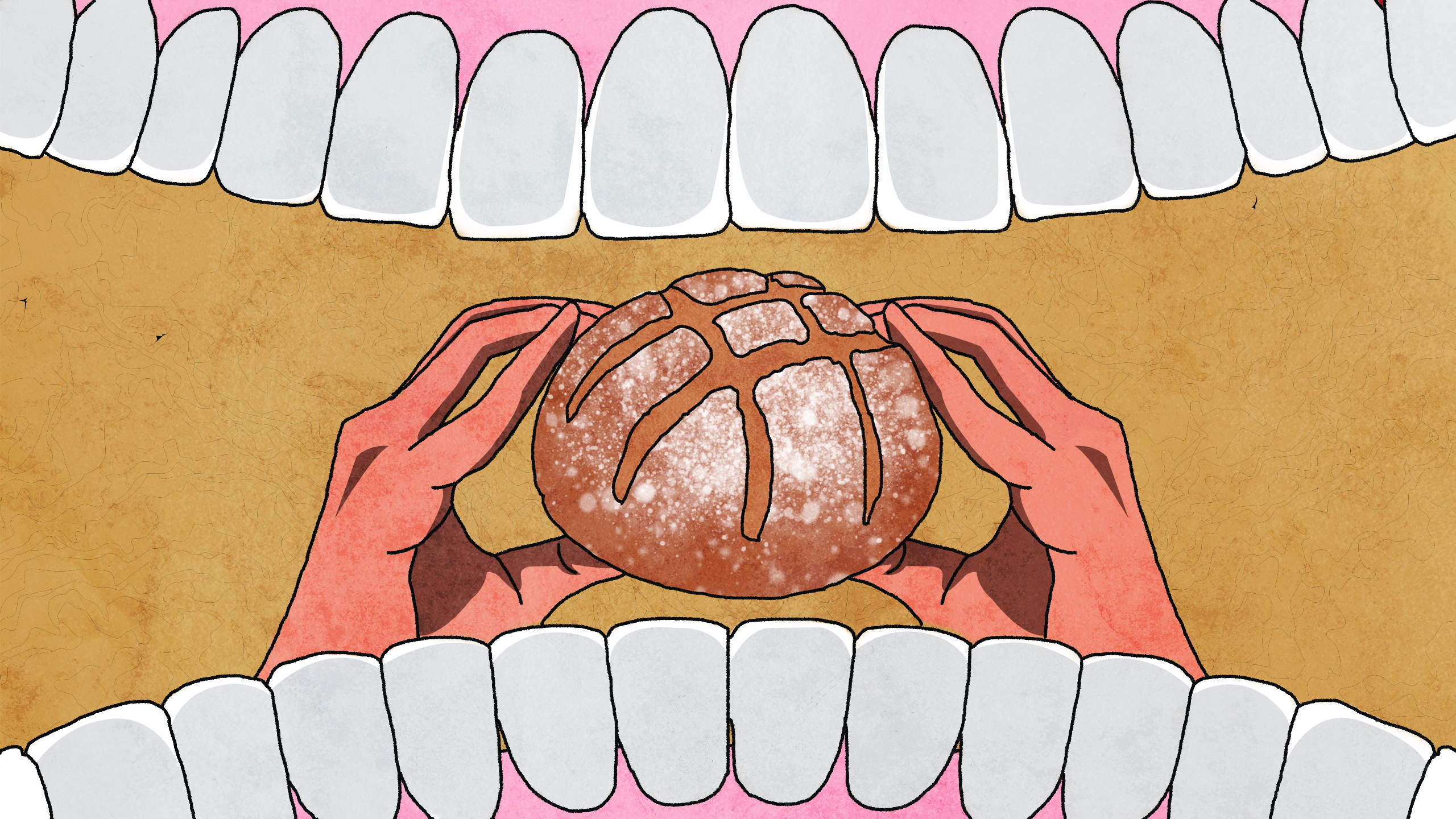
The Secret of Sourdough: Why This Bread Is Actually Great for Your Gut (Plus, How to Make Your Own!
How is your relationship with bread?
Maybe you incorporate it into every meal you possibly can, or maybe you avoid it because you’ve heard it can be bad for you in excess. Regardless of your carb habits, bread has been an essential part of the human diet for thousands of years.
Over 5,000 years ago, in ancient Egypt, people were using a combination of mixed grains and water to bake flatbreads on hot stones — this is the first evidence we have of people baking bread. Since then, the art of baking bread has progressed and spread over the globe over many centuries.
Medieval Europeans relied heavily on bread as a staple food, and bakers made several different types of bread from wheat, rye, barley, and other grains. Because of advancements in bread-making technology made possible by the Industrial Revolution, the contemporary bread-making business as we know it was able to emerge. Today, all kinds of bread, from crisp baguettes to soft, fluffy loaves, are still a staple food in many countries today.
Recently, there has been a resurgence in the popularity of sourdough bread. In what seems like the span of just a few short years, the internet has become flooded with unique sourdough recipes and personal stories from people of all different cultures.
So what has caused this resurgence of sourdough bread, and should you be incorporating more of it into your daily diet? In this piece, we talk about the secret of sourdough bread and why it’s good for your gut health.
Join In 500 Million+ On The Journey to Greatness
The History of Sourdough
In the absence of commercial baking powder and yeast, sourdough was the go-to method for leavening bread among early Western pioneers, especially among the intrepid souls who ventured north to Alaska. At the turn of the 19th century, California Klondike miners earned the moniker “sourdough” because of the taste from the wild yeast gathered from the air.
At this time, every miner’s cabin contained a tin full of fermented dough, used in place of yeast in preparing bread, biscuits, and flapjacks. It is even said that Alaskan miners would sleep with their trusted starters to protect them from the bitter cold.
Yet, sourdough’s origins date back long before miners arrived in Alaska. The usage of leavened bread in the form of sourdough dates all the way back to at least ancient Egypt. It was likely discovered by chance when good microorganisms, in the form of wild yeast, inevitably found their way into a bowl of discarded bread dough. The finished loaf was fluffier and tastier than before.
Health Benefits of Sourdough
In terms of nutrition, sourdough bread can’t be beaten. Yet, it’s worth keeping in mind that the many health benefits of sourdough bread may be outweighed by the risks it poses to those with sensitive stomachs or other medical issues. However, some potential health benefits of consuming sourdough bread have been uncovered through scientific investigation.
General Bodily Functions
Sourdough bread has a high concentration of nutrients that are readily absorbed by the body. That’s because of the way the bread’s lactic acid bacteria react with the nutrients in question.
Increased availability of minerals like folate, potassium, and magnesium occurs because these bacteria digest acids often found in bread. Cell division and the synthesis of DNA and other hereditary components rely on adequate levels of folate in the body.
Additionally, potassium also helps your cells work properly. It plays a key role in maintaining normal heart rate, neuron and muscle function, protein synthesis, and carbohydrate metabolism. Magnesium aids in the formation of protein, bones, and DNA, and it also modulates blood sugar and protein levels.
Disease Prevention
Sourdough bread has more antioxidants than other breads because of the lactic acid bacteria that ferment the dough. It has been shown that an increase in the synthesis of antioxidants can aid in the prevention of degenerative diseases such as cancer, cardiovascular disease, Alzheimer’s disease, and other ailments. This is because antioxidants help protect the cells in your body from damage.
A diet that is rich in antioxidants may lower one’s chance of developing a variety of ailments (including heart disease and certain cancers) because antioxidants also eliminate dangerous free radicals from the cells of the body, helping to stop or lessen the harm that oxidation can cause.
Reduced Blood Sugar Levels
Sourdough bread may also have a more moderate effect on blood sugar levels than white bread because the bread’s beneficial microorganisms alter the starch structure of the bread in a distinctive way.
The unique fermentation process changes the structure of the bread molecules — making your body absorb them slower, which decreases the bread’s glycemic index. This indicates that eating a slice of sourdough bread will have less of an effect on your blood sugar levels than eating a slice of white bread.
Improved Digestive Health
Sourdough bread may be simpler to digest than white bread for certain people. Some research suggests that the fiber in sourdough bread can work as a prebiotic, nourishing the “good” bacteria already present in your digestive tract. These bacteria are vital for keeping a stable, healthy digestive system.
Comparatively, the amount of gluten in sourdough is far smaller than that of other types of bread. Seemingly, the acid in the bread breaks down the gluten. As a result, persons with gluten intolerance may find eating sourdough is easier on their stomachs.
Risks Associated with Consuming Sourdough Bread
Just because sourdough bread is nutritious doesn’t imply that it comes without dangers. There are a few things that should always be taken into account before indulging in sourdough bread. Creating sourdough at home is a hobby for many. While this is usually risk-free, a contaminated sourdough starter could arise under certain conditions.
It’s possible that your sourdough starter has been tainted if any of the following apply:
- Never bubbles
- Appears “fuzzy”
- Develops green, pink, orange, or black spots
If your sourdough starter is showing signs like these, it’s time to toss it.
While sourdough bread is usually lower in gluten, it is not gluten-free. Sourdough may be simpler to digest for those with a gluten intolerance, but those with celiac disease should still avoid it. If you have a gluten sensitivity or celiac disease, contact your physician before introducing sourdough bread to your diet.
How to Make Your Own Sourdough Starter
To make sourdough bread, a mixture of flour and water is left to ferment at room temperature for about a week; this mixture is called a sourdough starter.
The starter collects yeast from the atmosphere during this time. Feeding it fresh flour and water every day will cause the yeast to proliferate, leading to the production of beneficial bacteria and air bubbles.
Breads made with this method don’t use commercial yeast. Instead, wild yeast is naturally collected from the air and employed to leaven the dough — resulting in the characteristic sour flavor. After the first time needed to make the starter has passed, it can be kept indefinitely by feeding it additional flour and water once a week.
To begin, you will need:
- 1 cup (113 grams) whole wheat or rye flour
- 1/2 cup (113 grams) water
- 1 cup (113 grams) all purpose flour
- ½ cup cup (113 grams) water
- A digital kitchen scale or measuring cups
- A non-reactive container (glass, stainless steel, or ceramic all work) that can hold at least 1 quart
Day 1
Begin by preparing 1 cup (113 grams) of whole wheat or rye flour and 1/2 cup (113 grams) of water to be properly mixed in the non-reactive container. You should let the bottle sit out at room temperature (70 degrees) for 24 hours. If you don’t want to leave the starter completely uncovered so it can pick up wild yeasts from the air, you can place a layer of cheesecloth over the container and attach it with a rubber band.
Days 2 & 3
Throw out roughly half of the beginning portion (around 113 grams or half a cup’s worth). For the next three days, you’ll be throwing out a lot of starter, which you can either use again to make pancakes or compost. Next, 1 cup (113 g) all-purpose flour and 1/2 cup (113 g) water should be added to the remaining starter. Mix together and set aside for 24 hours at room temperature.
Day 4
The starter should be bubbling by now, and you should begin feeding it every 12 hours.
To proceed with feeding, remove 113 grams of starter from the total, throw away the extra, and replace it with 113 grams of all-purpose flour and 113 grams of water.
After you’ve combined all the ingredients, cover them and let them sit for 12 hours.
Day 5
Over the next 12 hours, give the starter the same mixture of flour, water, and starter in a 1:1:1 ratio. After the volume of the sourdough starter has doubled and there are bubbles on the surface, it is ready to be used. Similarly, a sourdough starter that is ready to use will have a faintly fruity or tangy aroma.
If, after 12 hours, your starter hasn’t doubled in size and started bubbling, simply repeat the process of discarding and feeding it. It may take up to a week for the process to complete, so if the size hasn’t doubled by then, keep feeding it.
An active sourdough starter can be stored in the refrigerator until it has doubled in size; after this point, feedings can be reduced to once per week.
Feeding Your Sourdough Starter
Even if you’re not using your sourdough starter for baking, you should still feed it once a week. Sourdough starter should never be used straight from the refrigerator and must be fed to bring it back to life before it can be used in a bake. To prepare a starter for baking, take it out of the fridge the night before and feed it with fresh flour and water. Then, let it out at room temperature, covered.
In either case, measure off 113 grams (about half a cup) of starter and throw away the rest. One cup of all-purpose flour (113 grams) and a half cup of water should be added to the remaining ingredients (113 grams water). Cover the mixture and let it rest for a while until it has doubled in size. This could take as little as an hour or two or as long as 12 hours, depending on the ambient temperature and activity level of your starter.
Keep your starter in an oven with the light on to speed up the procedure if your home is chilly. If you live with roommates, you should put a note on the oven to remind people not to bake your starter.
Great Taste, Great Gut Health
The use of sourdough in baked goods has recently gained popularity, and for good reason. It is loaded with nutrients, including beneficial carbohydrates, protein, fiber, iron, and vitamins such as folate. Our bodies’ digestive process can be helped, the danger of developing chronic diseases can be reduced, and it can even promote healthy aging.
Including sourdough bread in your diet will help you to take advantage of the savory benefits that it offers, regardless of whether you get it from a local bakery or bake it at home on your own.
Greatness Authors
Greatness Authors is a collection of writers, thinkers, curiosity experts, and students of the world who are committed to bringing you the most up-to-date, impactful, and inspiring information surrounding Greatness topics.

Do You Have to Be a Morning Person to Be Successful? Here’s What Both Sides Have to Say

9 Reasons You’re Tired All the Time & How to 10x Your Energy

How to Have a Healthy Romantic Relationship Even if You Share Different Beliefs

The 7 Best Vitamins to Naturally Promote Better, Uninterrupted Sleep According to Shawn Stevenson

The Science of Forming Healthy Habits & Letting Go of Bad Ones, According to Author James Clear










